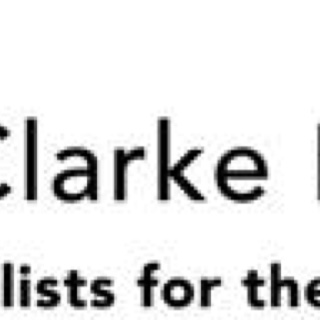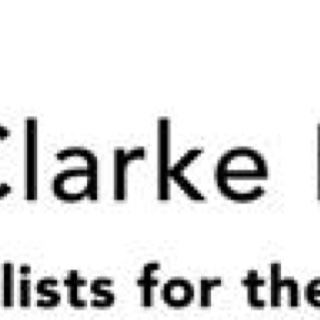Information
-
Month/Document No.
-
Main Contractor
-
Site
-
Elevation assessed & works completed.
-
Location
-
Conducted on
-
Prepared by
-
Persons Carrying out work to Area being Accessed
-
Rules of WIR and Progress Reporting
1. All reports need to be in for the dates that have been agreed on the reporting timetable. If there are any reports missing the reporting manager (AS) needs to make contact with the contracts manager (JHL), finding out why reports are missing and getting confirmation when they will be in. Everybody needs to remember that there is a maximum of three working days over date of when the report needs to be in. It is not an option for reports not be done after three days.
2. Generally, there should be reports prepared for each elevation, where all assessed levels are listed. Each single report may include more than one elevation. However, it must be clearly described in the introduction which facades have been examined and what works have been completed during the assessment.
3. When job is being handed over to the project manager/contracts manager, the Reporting manager must prepare a construction plan drawing of the project, number each elevation and then refer to these numbers when conducting Work Inspections.
4. Construction plan layout drawings with numbered elevations must be saved onto the M Clarkes reporting folder on the Network. Jobs/Projects/Quality.
5. Each report should include in the introduction (cover page of report) description of the assessed façade (assigned number) along with the description of type of works which were completed as assessed façade (assigned number) along with description of type of works which were completed and assessed by project manager.
6. We have issued standard detail drawings reference numbers D01, D02, D03, D04, D05 and so on. These are available in "M Clarkes Guidance Booklet” and need to be referred to throughout WIR and clearly show what is required.
7. The report with error/failure marked RED, must be saved on the system. The next report that will follow must show how the error was rectified. If improvement was not possible, eg: due to soft ground/lack of access, it needs to be described/explained. The answers column still needs to be highlighted red. However, if the error was rectified the section should be changed to green. The comment section is to be used for explanations of how and when error was rectified.
8. If project manager has found an error during the assessment, it must be noted and fixed before consecutive stages of works progresses, eg: CP board cannot start before Metsec sub frame is properly fixed. Quality Control Manager cannot accept the next WIR report until everything is fixed and up to date on the previous report. This is to make sure that all errors are corrected, and there are no error omissions.
9. Progress reports need to be genuine and relevant.
10. It is important that progress reports always have delay events.
11. All reports have to be sent to main contractor and subcontractor.
eporting Rules: -
Elevation assessed & works completed.
-
Add media
-
Completed by Subcontractors:
Part A. SFS System
-
1. Have the SFS been given status and passed by the architect?<br>
-
Add media
-
2. Has the operative been given the relevant drawings and details to complete the works.?<br>
-
Add media
-
3. Is the wall constructed using the correct depth and gauge of studs/trucks?<br>
-
Add media
-
4. Are operatives using the correct track fixings? Are the tracks fixed/installed to concrete/steel at correct centres?<br>
-
Add media
-
5. Are the operatives using the correct 'tek' screws for installing studs?<br>
-
Add media
-
6. Have the studs been installed to suit cladding joints locations?
-
Add media
-
7. Has the wall been set out to the correct Gridline offset? In the correct location?<br><br>
-
Add media
-
8. Have the compound sills and lintels been fixed together at centres of no more than 300 mm?<br><br><br><br>
-
Add media
-
9. Have the openings been formed in the correct locations? At correct height, length and width?<br><br>
-
Add media
-
10. Are the openings being formed using the correct studs/tracks compounds as per approved design specification?<br><br>
-
Add media
-
11. Have deflection heads been installed correctly with the required movement allowance?<br><br><br>
-
Add media
-
12. Have the works been completed to the current outline specification and manufacturers specification? (including windows and doors openings)<br><br>
-
Add media
-
13. Have the works been completed to current revised SFS drawings and details?<br><br>
-
Add media
-
13.1 Has the deflection gap been maintained at 25 mm. ?<br>
-
Add media
-
13.2 Has DHB clip been secured to head track.?<br><br>
-
Add media
-
14. Has VB bracing been installed as required?<br><br>
-
Add media
-
15. Is the wall completed to a true line and level?<br><br>
-
Add media
Inspection result/comments.
-
Signed off by Main Contractor
-
Signed off by Project Manager
A1. Cement Boarding and sealing.
-
1. Has the CP - Board of correct/specified type and thickness been installed?
-
Add media
-
2. Are the boards installed in a stretcher bond fashion?<br>
-
Add media
-
3. Are there 5mm joints around all edges?<br>
-
Add media
-
4. Has there been a 15mm gap left for floor deflection joints ?(Drawing Reference: D01, see MClarke reference booklet)<br>
-
Add media
-
5. Have the screws been fixed correctly (not over tight) into boards, using Nose Piece?(Drawing Reference: D02. See MClarke reference booklet)<br>
-
Add media
-
6. Have the correct number of fixings(minimum of 25) been installed to each board?<br>
-
Add media
-
7. Has the CP board been installed with no bumps, gaps, and bows?<br>
-
Add media
-
8. Was Daffa tape applied to all CP Board joints?<br>
-
Add media
-
9. Has the EPDM been installed to deflection joints and concrete interfaces?<br>
-
Add media
-
10. Is CP Board fixed correctly at deflection track from floor to floor? Fixed to track and not studs?<br>
-
Add media
-
11. Have fire barriers been installed as per specification/MClarke Guide.? (MClarke Guide Drawing D01)
Inspection result/comments.
-
Site notes
-
Add media
-
Signed off: Main Contractor
-
Signed by Project Manager.
-
Should you have any enquiries regarding this inspection report please contact M Clarke & Sons on 02825822500.
B. Rain screen Cladding Porcelanosa
-
1.Has site dimension survey been carried out to confirm elevation panels sizes and updated to MClarke Panel Drawing?<br>
-
Add media
-
2. Are cills, pods and flashings installed to the correct design details? Thickness, colour and depth?<br>
-
Add media
-
3. Are cills, pods and flashings installed using correct fixings and fixing centres?<br>
-
Add media
-
4. Are cills, pods and flashings installed to suit correct locations ?<br>
-
Add media
-
5. Are cills of proper quality and shape ?<br>
-
Add media
-
6. Are window supports fixed properly ?(are packers used of correct shape, are the fixings long enough)<br>
-
Add media
-
7. Are windows set to correct Centre Line horizontally and vertically within structural opening?<br>
-
Add media
-
8. Is the face of the windows position to the correct offset.?<br>
-
Add media
-
9. Are all adjacent windows aligned with each other?<br>
-
Add media
Inspection result/comments.
-
Signed off: Project Manager
-
Signed by: Main Contractor
B1. Breather Membrane
-
1. Have all vents, brackets, rainwater pipes been taken through the CP board and handed over to the main contractor?<br>
-
Add media
-
2. Has EPDM been installed to all vents, Rain water pipes, louvres, and bracket fixing centres?<br>
-
Add media
-
3. Has the correct and specified breather membrane been installed?<br>
-
Add media
-
4. Has the breather membrane been dressed out and over horizontal flashings / pods, taped and sealed?
-
Add media
-
5. Has breather membrane been taped at vertical joints and overlapped 300mm at horizontal joints?<br>
-
Add media
-
6. Has the breather membrane been taped to and around all openings protrusions, as specified on the Reference Drawing D 03 (see MClarke reference booklet)<br><br>
-
Add media
-
7. Have all parts of EPDM properly overlapped and secured with Dafa tape?<br>
-
Add media
-
8. Have all location of EPDM, where fixings/bolts had to go through been secured/sealed with silicone?<br>
-
Add media
-
Signed off: Project Manager
B2. Subframe settings.
-
1. Have subframe secondary brackets been installed in accordance with the subframe layout drawings?<br><br>
-
Add media
-
2. Is there specified number of secondary brackets fitted to the substrate as per each L.T-rail? <br>(depending on loads, higher elevation may need more brackets e.g. the very top level-end of the wall)
-
Add media
-
3. Have rails been fixed into brackets through specified holes, so as to permit thermal movement of the T-rail. (As per system specification)?<br><br>
-
Add media
-
4. Have thermal pads been installed behind brackets?<br>
-
Add media
-
5. Have correct type and number of fixings been used on brackets? <br>
-
Add media
-
6. Have bracket fixings been torqued correctly using correct torque drill?( was the screw driver sat at correct torque)<br>
-
Add media
-
Signed off: Project Manager
B3. Insulation/Taping
-
1. Have fire barriers been fitted and at correct locations?<br>
-
Add media
-
2. Have fire breaks been mitered at the edges of the facade so as to provide continuity of intumescent layer.?<br>
-
Add media
-
3. Has proper pattern of mechanical fixing been used ?.(Reference, see Figure 7, M.Clarke Guidance Booklet. <br>
-
Add media
-
4. Have fire pins been installed minimum one per board?<br>
-
Add media
-
5. Has insulation been fitted as tight as possible?<br>
-
Add media
-
6. Have all outlets, brackets, vents, edges of insulation boards, joints etc been taped up with silver tape?<br>
-
Add media
-
Signed off: Project Manager
PART C. FITTING OF RAILS
-
1. Have rails been set in accordance with deflection point locations?<br>
-
Add media
-
2. Have rails been set with rotating laser?<br>
-
Add media
-
3. Has the Project Manager checked the level with string line or laser?<br>
-
Add media
-
4. Has there been one dead fixing for rail minimum?<br>
-
Add media
-
5. Is the top and bottom of the rails overhanging no more than it is indicated on the rail setting drawing?<br><br>
-
Add media
-
Signed off: Project Manager
D. Porcelanosa Tiles.
-
1. Have proper suction lifters been ordered?<br>
-
Add media
-
2. Has the substructure of rails been sprayed/painted with black colour paint ?(in some cases it may be visible between glass panels).<br>
-
Add media
-
2.1 Has the substrate of rails been covered with adhesive Mastic Beading so as to prevent rattling noise .?
-
3. Has the correct spacing between panels been maintained at correct distance as specified by designers?. (typically 10-12 mm, the minimum 5mm)<br>
-
Add media
-
4. Have expansion tiles/panels been installed at correct location?<br>
-
Add media
-
5. Have correct specified colours and sizes of panels been installed?
-
Add media
-
6. Have recommended stainless steel fixings been used?
-
Add media
Inspection result/comments.
-
Add media
-
Signed off by Main Contractor
-
Signed off: Project Manager








